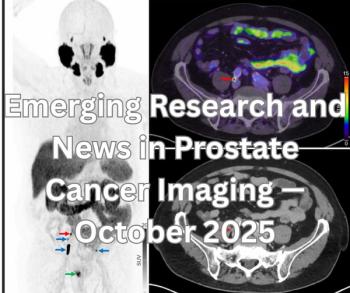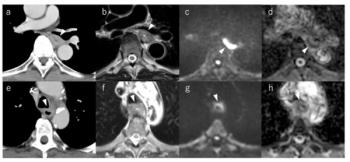
NSF prompts some experts to draw lines between MRI contrast agents
Most radiology meetings now devote some sessions to the hot topic of nephrogenic systemic fibrosis. The question about which agents are safest invariably comes up during question and answer sessions.
Most radiology meetings now devote some sessions to the hot topic of nephrogenic systemic fibrosis. The question about which agents are safest invariably comes up during question and answer sessions.
NSF is very rare. Patients who have severe to end-stage kidney disease and are therefore unable to clear toxic gadolinium from the body are thought to be at highest risk. All known NSF cases have been linked to severe disease, though concern remains that the condition could occur in cases of moderate kidney disease.
The FDA in May issued a black box warning for all gadolinium agents approved in the U.S.:
- Magnevist (Bayer Schering Pharma)
- MultiHance (Bracco)
- ProHance (Bracco)
- Omniscan (GE Healthcare)
- OptiMark (Mallinckrodt)
The
"The FDA is continuing its conservative approach for the whole class of agents," said Dr. Phillip H. Kuo, an assistant clinical professor of radiology at Yale University.
But some experts in the U.S. and in Europe disagree with a blanket warning equally applied to agents.
Although caution is in order for all agents in high-risk patients, having the same warning for all five U.S.-approved agents suggests that the relative risks are all the same, according to Dr. Emmanuel Kanal, head of the American College of Radiology Blue Ribbon Panel on MR Safety.
While definitive relative risk quantification for these five agents is still not absolutely established, data suggest that significant differences exist, Kanal said. These are based on the strength of the bonding of various agents.
"The FDA appears to believe there are not enough reliable data to warrant issuing special warnings for specific agents. In this particular area, I am at odds with the FDA's position," Kanal said in an interview with Diagnostic Imaging.
To date, more cases of NSF have been reported with Omniscan than any other agent. Some in the imaging community believe the Medwatch data underlying these reports are precise enough to indicate only trends. Others point out that there are many more Omniscan cases relative to Magnevist, even though the latter agent has a far larger market share. Since utilization levels are much lower for some of the other agents, it is not clear whether problems with these agents will emerge later as experience with them grows.
In a recent editorial, Dr. Henrik Thomsen of Denmark noted that the peer-reviewed literature reported 74 documented cases as of mid-March. More than 90% of these cases were related to Omniscan (Acta Radiologica 2007;48(6):593-596).
Thomsen's center alone had 26 biopsy-proven cases from Jan. 1, 2002, to March 21, 2006, all associated with gadodiamide (Omniscan). Patients developed NSF two to three months after exposure. In March 2006, the facility substituted a cyclic agent and began to use alternative imaging modalities wherever possible. As of this writing, no new cases have been reported.
At the American Roentgen Ray Society meeting in June,
The manner of bonding varies greatly depending on the agent. Some have cyclical structures (ProHance, Gadovist), and others are linear in form (Omniscan, OptiMark, and Magnevist).
According to Kanal, the occurrence of transmetallation, or displacement of the gadolinium metal, in various contrast agents has been well documented in the scientific literature, as shown by a review article by JM Idée et al (Fundam Clin Pharmacol 2006;20[6]:563-575).
Kanal said at the ARRS meeting that the available studies indicate that agents with the cyclic structure have the strongest bonds between the gadolinium ion and the ligand molecule. Therefore, the cyclic agents may be safer than linear agents with respect to NSF, he said.
According to
Meanwhile, the European Pharmacovigilance Working Party has issued specific recommendations about various agents for member states of the European Union. According to the group, agents with cyclic molecular structures are least likely to release free gadolinium (see chart).
Although Magnevist has a linear structure, it is also ionic, and may, therefore, be less likely than the other linear chelates to release free gadolinium, according to the report.
The European Pharmacovigilance Working Party
"European agencies have gone out of their way to differentiate that Omniscan and OptiMark have a similar structures and a higher propensity toward release of gadolinium than the rest of the agents," Kuo said. "However, in their latest release, they also indicated Magnevist was contraindicated in patients with severe kidney disease."
If concerns over NSF cause providers to perform fewer contrast-enhanced studies on patients at risk of developing the disease, there is a risk that important diagnoses could be missed, Kuo said.
"We could eliminate NSF if we never used gadolinium ever again. But that is not practical. The price to pay in patient care would be too high," he said.
Screening for NSF is also emerging as an important issue, as institutions look at which patient populations require caution. Some institutions would prefer to screen everyone, and more information is needed about the risk-benefit ratio and costs of screening, he said.
Management of patients with moderate chronic kidney disease, which is very common in patients over 70 (more than 25% of this population), could prove challenging, as most of these patients are not aware they have it, according to Kanal.
The ACR Committee of Drugs and Contrast Media and the ACR Blue Ribbon Panel on MR Safety are finalizing recommendations for new screening guidelines, including recommendations for glomular filtration rate screening of certain subsets of the patient population, he said.
For more information from the Diagnostic Imaging archives:
Newsletter
Stay at the forefront of radiology with the Diagnostic Imaging newsletter, delivering the latest news, clinical insights, and imaging advancements for today’s radiologists.






























